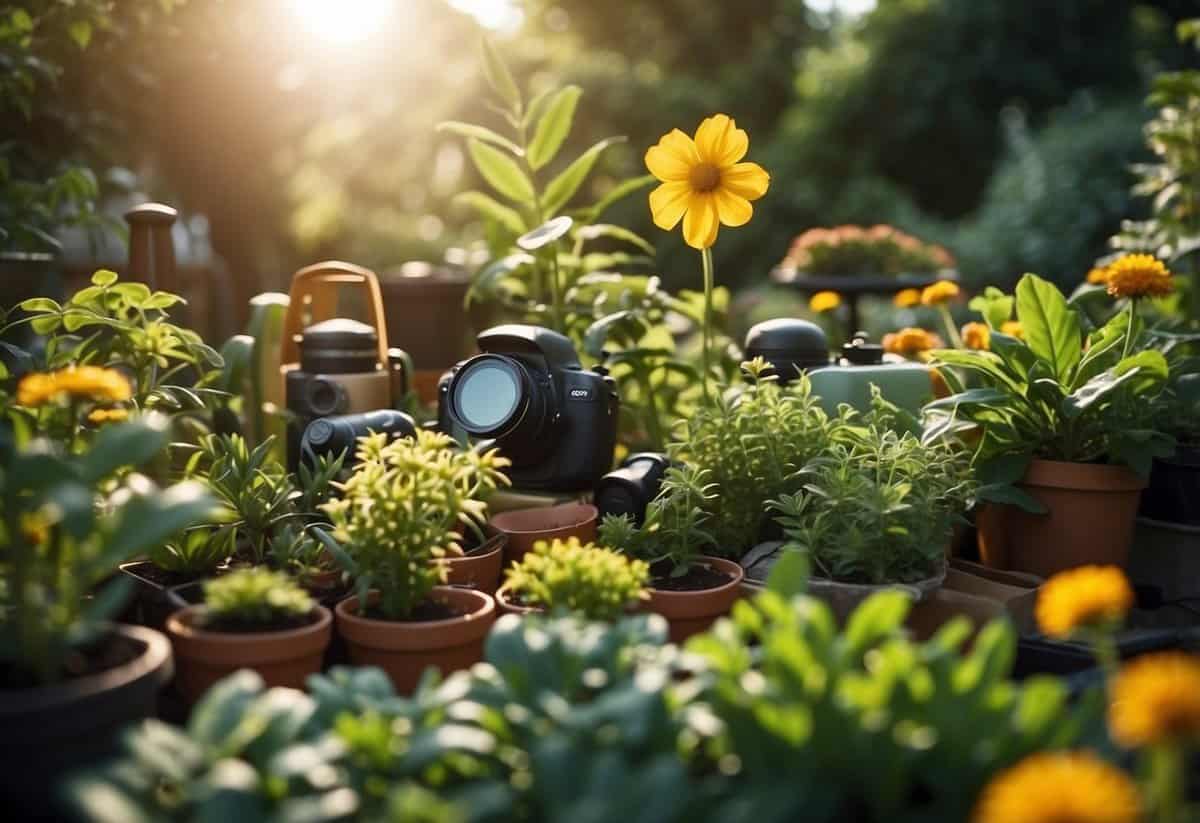How Often Should I Maintain My Garden? Tips for a Healthy Outdoor Space
Gardening is both a relaxing and rewarding hobby, but knowing how often to maintain your garden can make all the difference in its success. You should maintain your garden at least once a week, with tasks like weeding, watering, and inspecting for pests. Regular upkeep ensures that your plants stay healthy and your garden looks its best.

Different plants require varying levels of care, so understanding your garden’s specific needs is crucial. Some vegetables may need daily attention, especially during hot weather, while others might be fine with weekly care.
Keeping a consistent schedule helps you catch problems early and keeps your garden thriving. From watering schedules to pest control, investing time in maintenance pays off with a bountiful and beautiful garden.
Understanding Plant Needs and Watering Basics

Plants need the right amount of water to stay healthy. Overwatering or underwatering can harm them. Assessing soil moisture and using the right watering techniques can help.
The Importance of Water for Plant Health
Water helps plants grow strong and stay healthy. Every type of plant has different water needs.
Some plants need more water, like tomatoes. Others, like cacti, need less. Too much water can drown roots and cause rot. Not enough water can lead to wilting and slow growth.
Water helps in nutrient transport, photosynthesis, and temperature regulation. Proper watering ensures that your plants get what they need to thrive.
Watering tips:
- Water deeply: Aim for the roots, not the leaves.
- Water early: This reduces water loss from evaporation.
- Consistent schedule: Sticking to a routine helps plants adjust.
Assessing Soil Moisture and Watering Techniques
Different soils hold water differently. Sandy soil dries fast, while clay holds water longer.
- Check moisture: Stick your finger into the soil. If it feels dry, it’s time to water.
- Moisture meters: These can help you know the exact levels.
- Watch plant leaves: Wilting or yellowing may show incorrect watering.
Watering methods:
- Drip irrigation: This system delivers water directly to the roots.
- Watering can: Useful for small gardens or precise watering.
- Garden hose: Covers larger areas but be careful of overwatering.
Improving soil moisture:
- Organic matter: Add compost to retain water.
- Good drainage: Ensure there’s no standing water around plants.
- Mulching: Mulch helps reduce water loss.
Seasonal Garden Maintenance

Gardening requires different tasks depending on the time of year. Each season brings its own challenges and opportunities for maintaining a healthy and beautiful garden.
Spring Awakening: Preparing for Growth
Spring is the best time to prepare your garden for a season of growth. Begin by cleaning up debris and fallen leaves from winter. This helps prevent pests and diseases.
Next, you should start planting hardy vegetables like carrots and beets. Ensure your beds are ready for planting by adding organic matter and compost to enrich the soil. This provides essential nutrients for plant growth.
Prune shrubs and trees to encourage growth and remove dead branches. Mulching is also important to retain moisture and suppress weeds.
Summer Care: Managing Heat and Watering
In summer, managing the heat and ensuring proper watering is crucial. Water your garden early in the morning to reduce evaporation. Pay extra attention to your vegetable garden, as vegetables need consistent moisture to grow well.
Consider using mulch to keep the soil cool and maintain moisture levels. Check for pests and diseases regularly, as summer heat can accelerate their spread.
Fertilize flowers and vegetables monthly to replace nutrients lost in the soil. Prune fruit-bearing shrubs and replant strawberries after fruiting to ensure continued growth and yield.
Autumn Adjustments: Preparing for Dormancy
Autumn is the time to prepare your garden for the coming cold weather. Begin by harvesting any remaining vegetables and fruits. Cut back dead or dying plants and clean up the garden beds.
Add a fresh layer of mulch to protect plant roots from falling temperatures. You can also plant cover crops like clover or rye to add nutrients back into the soil for spring.
Prune trees and shrubs to remove weak or dead growth. This helps prevent damage from winter storms and supports healthy growth when spring arrives.
By following these seasonal maintenance tips, you can enjoy a thriving garden year-round.
Irrigation Strategies and Scheduling

Proper irrigation strategies and scheduling help ensure that your garden stays healthy and vibrant. This involves setting up an efficient watering system and crafting the perfect watering schedule based on various factors.
Setting Up an Efficient Watering System
An efficient watering system is essential to avoid water waste. Drip irrigation and soaker hoses are great options because they deliver water directly to the plant roots with minimal evaporation. This ensures your plants get the moisture they need.
If you prefer using sprinklers, ensure they cover the entire garden evenly. Consider using a rain gauge to monitor rainfall, so you can adjust your irrigation accordingly. This helps prevent overwatering, which can lead to root rot.
Morning is the best time to water your garden because the cooler temperatures reduce evaporation. Evening watering can lead to mold due to prolonged wetness. Always check the local weather conditions to optimize your watering routine.
Crafting the Perfect Watering Schedule
Creating an ideal watering schedule depends on the type of plants, soil conditions, and weather. For instance, during the summer, you might need to run your drip lines for 20-60 minutes one to three times per week, as suggested by Epic Gardening.
In the spring, you can reduce the frequency to 10-30 minutes one to two times per week. For vegetable and flower gardens, watering every 2-3 days during warmer months is typically enough. Using a rain gauge can help you adjust this schedule when there’s significant rainfall.
Check the soil to ensure it is moist but not soggy. If you use the checkbook method described by UMN Extension, you can better manage your garden’s water balance. This method helps you track soil moisture and irrigate more efficiently.
By balancing your watering schedule and system, you can keep your garden thriving with minimal effort.
Garden Health and Plant Monitoring

Maintaining your garden’s health involves regularly checking for signs of over or underwatering and addressing potential diseases. Both elements are crucial for ensuring your plants grow healthy and strong.
Identifying Signs of Under or Overwatering
Monitoring your plants’ water intake is essential for their growth. Signs of overwatering include leaves that turn yellow and roots that may show signs of root rot. You might also notice a musty smell from the soil.
Conversely, underwatering often results in wilting and brown, crispy edges on the leaves. Plants may look drought-stressed, indicating they need more water. To avoid evaporation, water your plants early in the morning or late in the evening. Using a consistent schedule can help maintain the right balance.
Remember to check the soil moisture regularly. A simple finger test can help you gauge if the soil is too dry or too wet.
Preventing and Addressing Garden Diseases
Diseases in your garden can halt plant growth and cause significant damage. Keeping the garden clean and debris-free is vital for plant health. Remove all plant debris, especially before winter, to prevent insects and diseases from finding a refuge (learn more).
Regularly inspect your plants for signs of disease, such as spotted or wilting leaves. Ensure good air circulation around plants to reduce moisture that can lead to diseases. If you spot signs of disease, act quickly. Remove the affected parts and dispose of them properly.
You might also want to practice crop rotation and use disease-resistant plant varieties to keep your garden healthy. Using cultural and biological controls can also help maintain plant health without relying heavily on chemicals (more tips).







